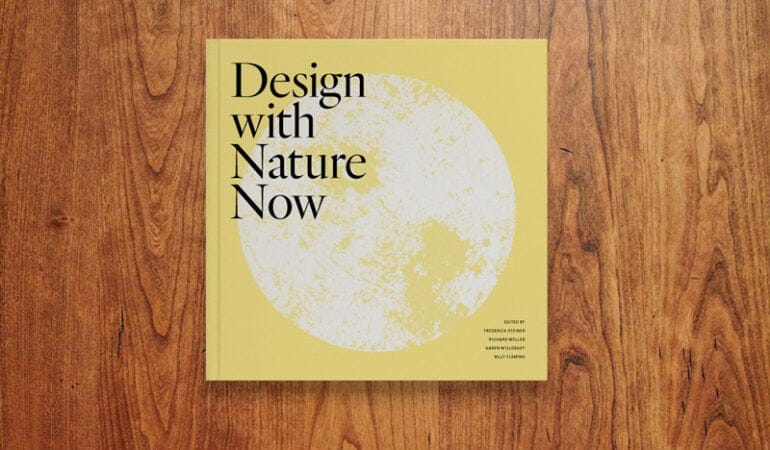
President’s Message
“Man is an epidemic, destroying the environment upon which [he] depends and threatening his own extinction.”
Addressing a throng of 30,000 people in Philadelphia’s Fairmount Park at the first Earth Day demonstration in 1970, landscape architect and author Ian McHarg minced no words. His was not a feel-good speech; in addition to the sobering assessment above, he also informed the crowd, “You’ve got no future.”
Those words, though dark, were intended to help his listeners see the light. McHarg believed humanity was mired in a plight of our own creation, but not an intractable one—and he had solutions to offer. Exactly one year earlier, he had held in his hands the first bound copy of his book Design with Nature, a nearly 200-page treatise in which he called for a new way of thinking about the relationship between people, the built environment, and the land we occupy. The book’s first print run sold out. So would a second. It was evident by the time he delivered that Earth Day speech that a hunger existed for the ideas he was putting forth. In fact, his philosophy would ultimately change the way an entire generation of planners, architects, and designers thought about the relationship between people and place. His book, along with the work of other leading thinkers like Jane Jacobs, helped change the way many of our cities look and function, especially in the United States. It still tops lists of influential design and planning publications.
Fifty years ago, Design with Nature helped launch the field of ecological planning—and helped us pivot from a late 20th-century society that viewed cities as a necessary evil to one that increasingly sees them as attractive, liveable places that just might hold the key to our salvation as a species. Today, the Lincoln Institute is delighted to partner with McHarg’s successors at the Stuart Weitzman School of Design at the University of Pennsylvania on the follow-up volume excerpted in this issue, Design with Nature Now. Edited by Richard Weller, Karen M’Closkey, Billy Fleming, and Frederick Steiner, the new book offers an unprecedented collection of thoughtful tributes to McHarg, exemplary projects that reflect his tenets, and forthright assessments of how far we’ve come—and how far we’ve yet to travel.
Taken together, the book (forthcoming in October) and an eponymous international exhibition and conference, both hosted at Penn in 2019, remind us of the urgency that led McHarg to write his seminal work—and the unavoidable fact that, in many ways, that urgency has only increased. With urbanization occurring rapidly—some two billion more people are expected to live in the world’s cities by 2050—and climate change demanding that we rethink nearly everything about where and how we live, McHarg’s ideas are more apt than ever.
For the Lincoln Institute, introducing a new generation to his work is part of a broader effort to elevate the critical role of land as a solution to our most pressing economic, social, and environmental challenges. We do this through publications like this book, and through our work on the ground in places like the U.S. Rust Belt, where we bring together small legacy cities to think about innovative revitalization strategies; in China, where we support a government-led effort to implement stormwater-absorbing sponge cities; and in Latin America, where we promote new teaching tools to engage planners in the work of improving urban conditions.
This kind of work is important everywhere, but especially in the developing world, where urban growth is accelerating and weakly governed. A shift toward quality growth is beginning to happen; we can support that shift by embracing and spreading McHarg’s principles. To contradict his warning that society has no future, we must continue the work of getting urbanization right. That means ensuring safe neighborhoods and strong economies, yes, but it also means replacing impervious pavement with bioswales and redesigning streetscapes at the human scale; implementing green and blue infrastructure where gray infrastructure once reigned; and converting energy-intensive buildings into sustainable structures that are healthier places to live and work. These are not glamorous projects, but neither are they extraneous; they are fundamental to our ability to redesign and rebuild a functioning society for ourselves that does not, in the words of McHarg, “threaten our own extinction.”
Is humanity indeed an epidemic bent on destroying our environment and ultimately ourselves, or can we find and apply a cure? At the Lincoln Institute, the Stuart Weitzman School of Design, and other organizations dedicated to studying the connections between people and place, we know that tools ranging from thoughtful land use policy to innovative design can contribute to a positive prognosis. But the time for action is now. We can’t change the past, but we can embrace the vision of McHarg and his many successors in the field of landscape ecology and broaden the implementation of ideas that elevated practice in the fields of architecture, urban planning, stormwater management, and many others. We must build upon McHarg’s legacy and Design with Nature Now—before it truly is too late.
